European Migrant Crisis
This submission is currently being researched & evaluated!
You can help confirm this entry by contributing facts, media, and other evidence of notability and mutation.
Overview
The European Migrant Crisis refers to the ongoing exodus and resettlement of emigrants from the Middle East, Africa and Central Asia, the majority of whom are Syrian refugees and asylum-seekers displaced by the ongoing civil war in Syria, in European countries. The dramatic growth of migration from Europe's neighboring regions was observed as early as in 2013, but the trend rapidly escalated to the level of a European humanitarian and political crisis during the summer of 2015.
Background
While immigration to Europe has been steadily on the rise for decades, it became recognized as an alarming trend during the late 2000s when large numbers of undocumented migrants from the Middle East and Africa began illegally entering Europe, mainly through Turkey and Greece. In response, the European border control agency Frontex implemented stronger security measures to prevent illegal immigration by land, which in turn led to a dramatic increase of migrants attempting to enter Europe by crossing the Mediterranean Sea. Between 2010 and 2013, the migration trend snowballed into a humanitarian crisis as hundreds of thousands of civil war-displaced refugees from the Middle East, mainly of Libyan and Syrian origins, started seeking asylum in European countries. By 2014, the number of asylum applications in the EU had reached 626,000, and during the first eight months of 2015, more than 500,000 migrants entered the European Union.

Syrian Refugees
Most of the refugees are known to be from Syria, where the multi-factional Syrian Civil War waged since years, made the country too hostile and dangerous to stay. Along with them, other refugees came from Iraq, Afghanistan and Eritrea, also areas in war, and economic migrants came from other countries from Africa and Central/Eastern Asia, to seek a better life in Europe's more prosperous and advanced countries.



Fatalities at Sea
As more and more migrants began taking the sea routes on the Mediterranean Sea into Europe, tragic maritime accidents also became increasingly frequent and fatal for thousands of migrants traveling on crowded and ill-maintained boats. These routes generally involved Italy, Greece, and Spain towards France and the United Kingdom. During the first half of 2015, the death toll of European migrants while crossing the Mediterranean Sea rose to a record level, prompting several EU nations to prop up their maritime rescue efforts to reduce fatalities at sea. In April, at least 1,308 refugees and migrants drowned or disappeared en route to the European borders in several shipwrecks, a staggering spike in comparison to 42 in April 2014.


Notable Developments
Political Reactions
The European Union and Europe's political leaders were slow to react in a coordinated way, and the crisis gave rise to a huge rift in politics in regard to Western and Eastern European political stances, whereas Western European governments tend to support migration and the relaxation of the relevant asylum and border laws, and Eastern European governments (most of them in post-socialist countries) tend to oppose migration, and support the enforcement or even tightening of the aforemented laws.
Border Control
The so-called Dublin Agreement dictates that asylum seekers should be processed in the first EU country in which they arrive, but in reality, most of the refugees don't want to apply for asylum or register in the Dublin system until they arrive in their destination country, most often Germany. The so-called Schengen Area makes it possible for EU citizens to travel between the countries in the area without visas and compulsory border checks. This policy collapsed as masses of refugees and migrants walked through countries and over borders, while not being EU citizens. In consequence, several EU countries imposed border controls, lockdowns or outright erected fences, either to allow the processing of the incoming people in a timely manner, or to channel them to official asylum processing points, so people would need to comply with Dublin Agreement rules. In some occasions, the border control or lockdowns caused violent protests, where riot police had to use tear gas, water cannons and other dispersing techniques.
Political Asylum
The crisis led many EU member nations to construct temporary refugee and humanitarian facilities, channeling refugees and migrants on government-owned buses and trains to processing facilities or temporary camps, or to a border of a neighboring country to avoid excessive crowding and rioting. The stances taken by individual governments and the statements made by politicians contributed to escalating diplomatic tensions, especially among Austria, Hungary, Serbia, Croatia and Slovenia.
News Media Coverage
Amidst the political debate, many of the world's media outlets criticizes European politician's apparent inability to act in coordination to mitigate the crisis and to help the refugees and migrants en route, while also criticizing the governments who oppose migration and erect border fences. Some outlets however claim that most of the mainstream media is biased, using dramatized footage, photographs and stories, and unfairly criticizing anti-migration governments as inhumane, even fascist powers, while distorting the nature of the refugees and migrants, withholding information about their negative aspects.
Online Reaction
The crisis has spawned parodic and sarcastic images both mocking Germany and German chancellor Angela Merkel's apparent invitation of migrants, but also the apparent indifference or outright hostility of Europe, the European Union, or individual countries, most notably, the border fences erected and the lack of wide-ranging search and rescue operations on the Mediterranean Sea.
Kiyiya Vuran Insanlik
On September 1st, 2015, Turkish Twitter users began tweeting the hashtag #KiyiyaVuranInsanlik (English: Humanity Washed Ashore), along with a photo of the three year-old Syrian boy named Aylan Kurdi, who died overnight in the Mediterranean Sea by drowning during his family's failed attempt at a night passage from Turkey to Greece. In the photo, Kurdi is seen lying face-down in the sand on the beaches of Bodrum, Turkey.
Search Interest
External References
[1] Wikipedia – European Migrant Crisis
[2] BBC – European Migrant Crisis
[3] BBC – Migrant crisis: Migration to Europe explained in graphics
[4] New York Times – Which Countries Are Under the Most
Strain in the European Migration Crisis?
[5] Financial Times – Europe’s Migration Crisis
[6] Reddit – A Summary on the Current Immigration Crisis in Europe
[7] The Independent – A Turkish couple spent their wedding day feeding 4,000 Syrian refugees
[8] NBC News – Germany to Spend $6.6 Billion on 800,000 Refugees and Migrants
[9] Reuters – Germany prints its constitution in Arabic for refugees to learn
[10] Reddit – MRW I see Germany ask the Syrian refugees to get on a train so they can take them to a camp for help


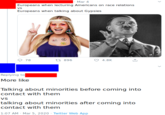
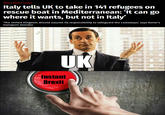


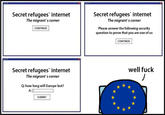
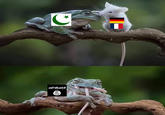









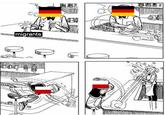
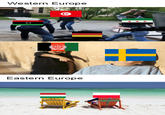


Top Comments
Ryumaru Borike
Oct 01, 2015 at 02:08PM EDT
lisalombs
Oct 01, 2015 at 12:57PM EDT